DEFINITION OF TERMS:
- KEYSTONE means they are listed by National Wildlife Federation as core plants for a wildlife garden in my ecoregion (Ecoregion 8).
- NOT QUITE NATIVE means they are slightly out of range but adjacent to NYS as determined by GoBotany and NY Flora Atlas.
- Otherwise the plant is a NY-native or native to the area noted
Evergreens are good plants for cover all year round, but especially in our cold winter months.
Juniper (Juniperus)
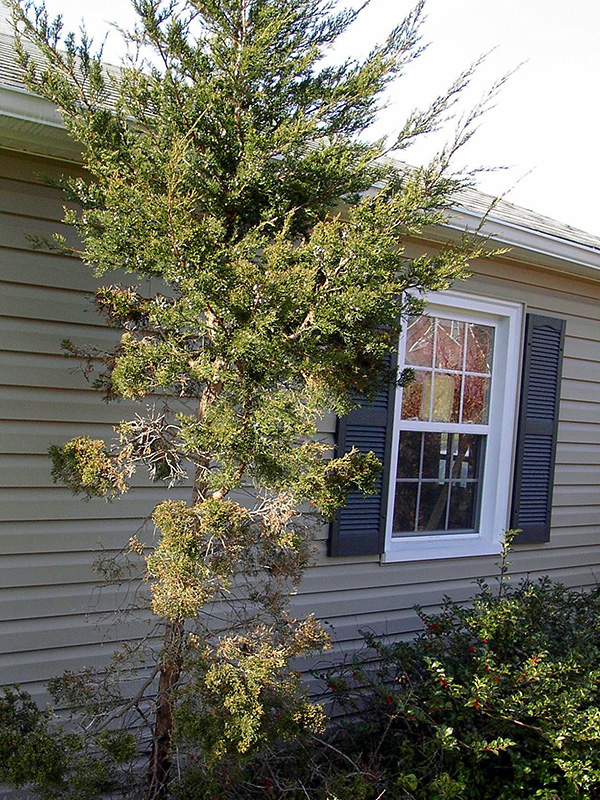
This is some kind of juniper. When we planted this many years ago, we didn’t keep track of details like particular names. (See what happened to it …)
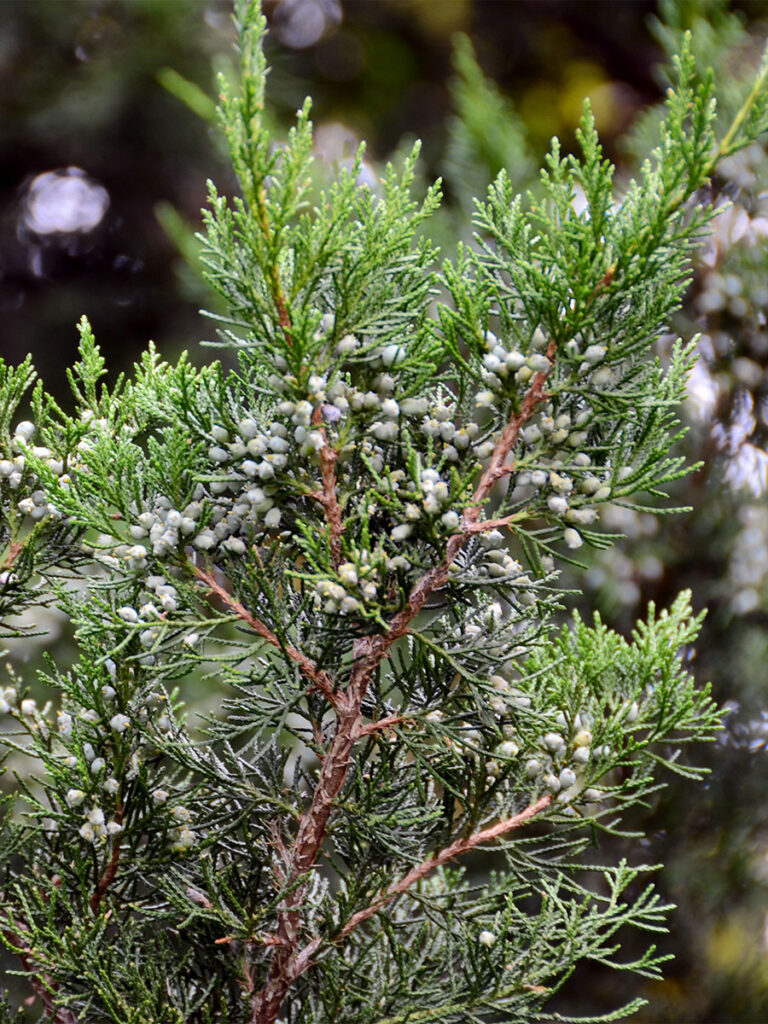
It produces a nice crop of berries for the birds. “Cedar” waxwings, as their name indicates, especially like it. (And we haven’t taken advantage of this resource, but juniper berries are also the secret ingredient in gin!)
Eastern red-cedar (Juniperus virginiana)
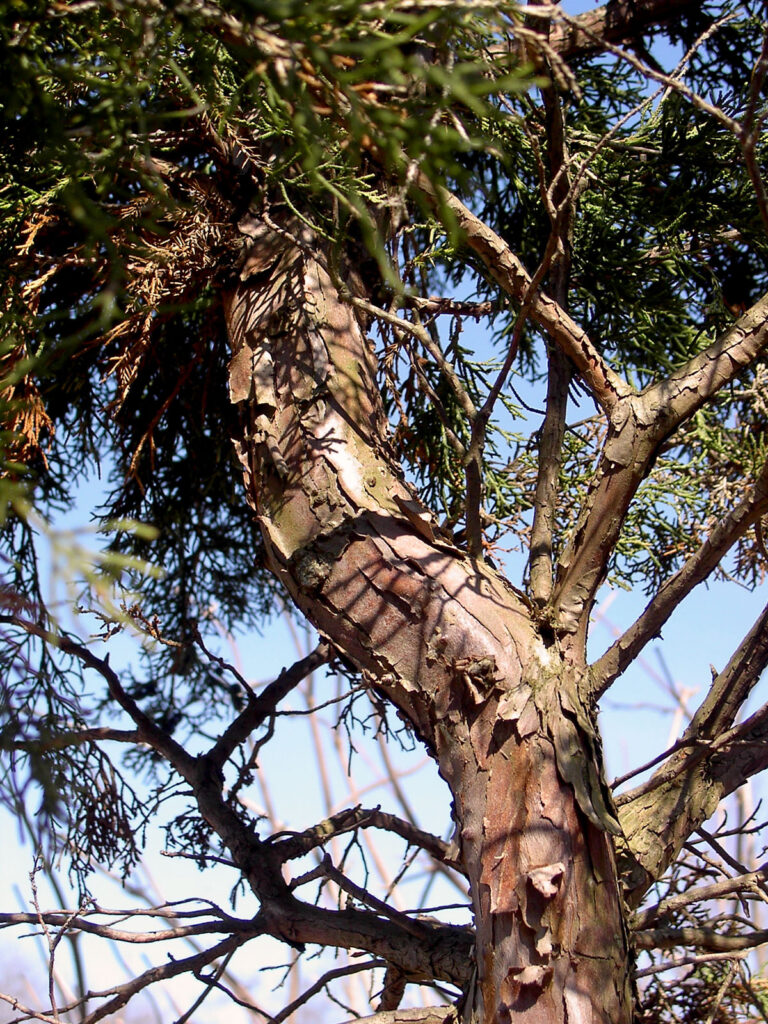
Eastern red-cedar is kind of a scruffy-looking plant (at least ours is), but as William Cullina points out in his book Native Trees, Shrubs & Vines, there’s a lot of individual variation in this species. In other words, you could say they have a lot of “character.”
It’s great for wildlife, especially birds, who love its nutritious berries and consider it a good place to build a nest and to seek cover.
Wildlife: Berries for birds, small mammals; nesting material and cover
Larval host: Olive butterfly
- Learn more:
- Wildflower Center: Eastern red cedar
- Native Plant Trust’s GoBotany: Juniperus virginiana
Arborvitae (Thuja occidentalis)
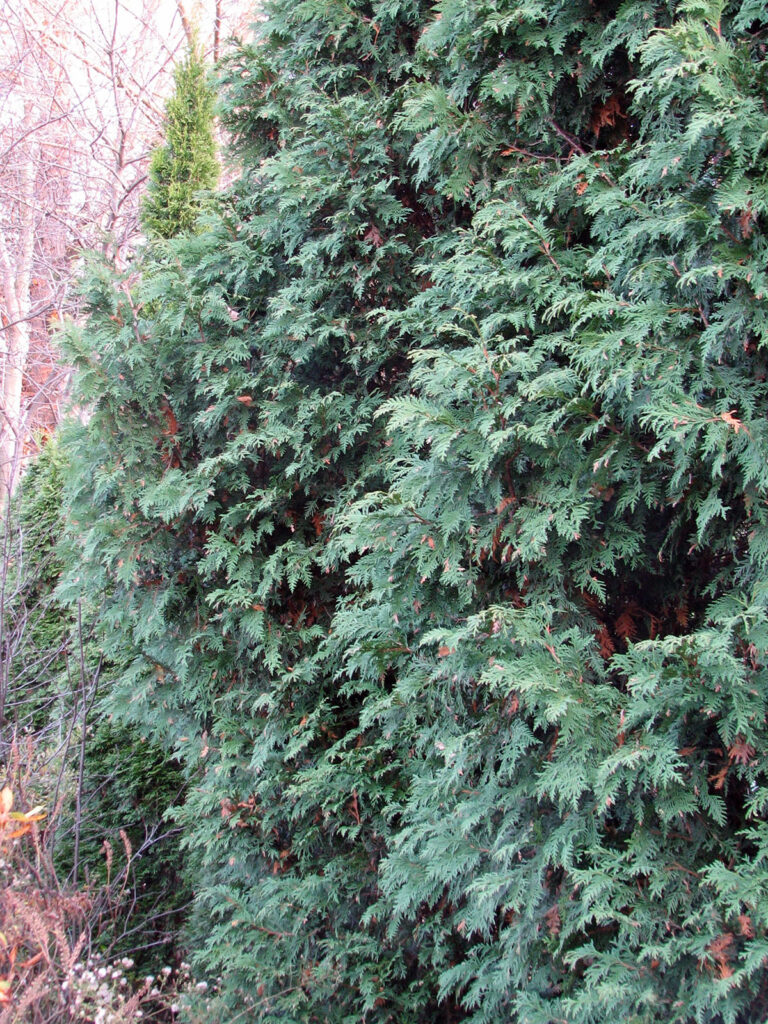
Arborvitae is also known as Northern white cedar. Note that there are two different cultivars in this photo. Each cultivar has different ultimate heights and other characteristics.
We didn’t always take this into account, so some of our arborvitae are getting taller than we expected. Still, they’re great native plants, and — especially important — easy to find commercially, though generally only cultivars have been available.
Wildlife: Food and cover for birds
- Learn more:
- Wildflower Center: Arborvitae
- PennState Extension: The mighty arborvitae
KEYSTONE PLANT: Canadian hemlock (Tsuga canadensis)
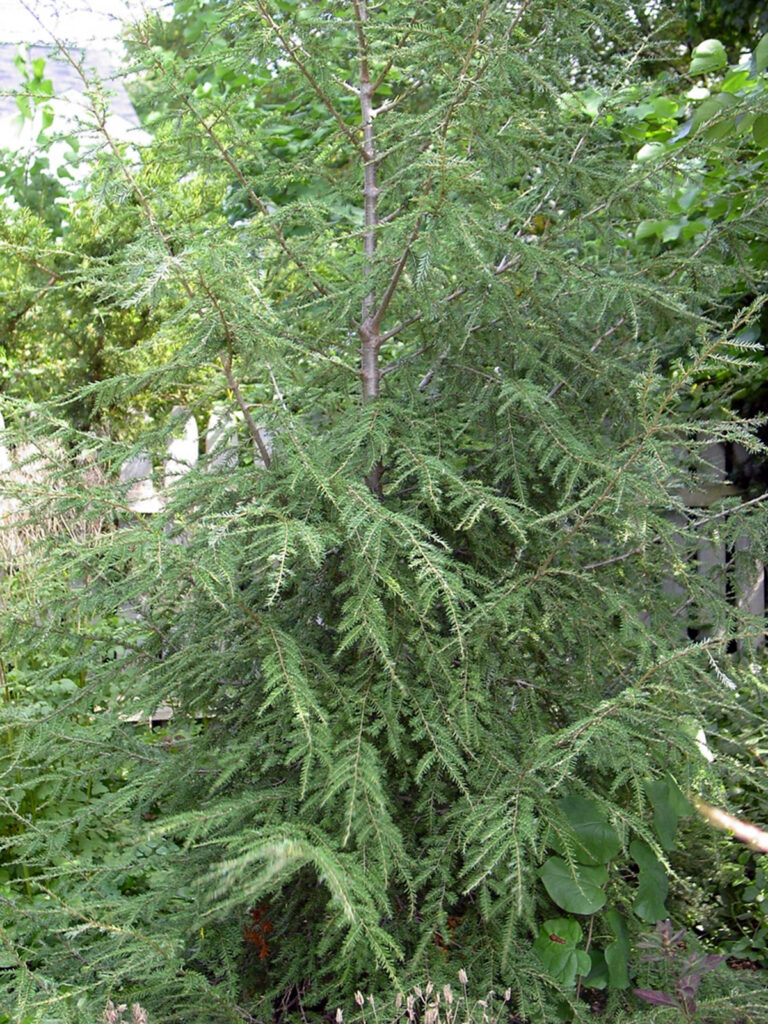
A hemlock can get to be a giant tree, but this young tree looked like it fit the space well.
Generally homeowners keep them pruned pretty well — but we missed the boat on that.
These three hemlocks are much too large now for us to prune effectively. They’re also way too close together.
The garden center where we purchased them many years ago insisted that they could be planted just a few feet apart. What could they have been thinking? I remember calling them to verify their instructions and they insisted that it was the correct distance. I’ve since learned that it pays to do your own research on these things. They must have been assuming I would be out there pruning the daylights out of these trees every year or that I would just have them removed after a few years and bought new trees to “redecorate.” We now try to choose plants that fit their spaces naturally.
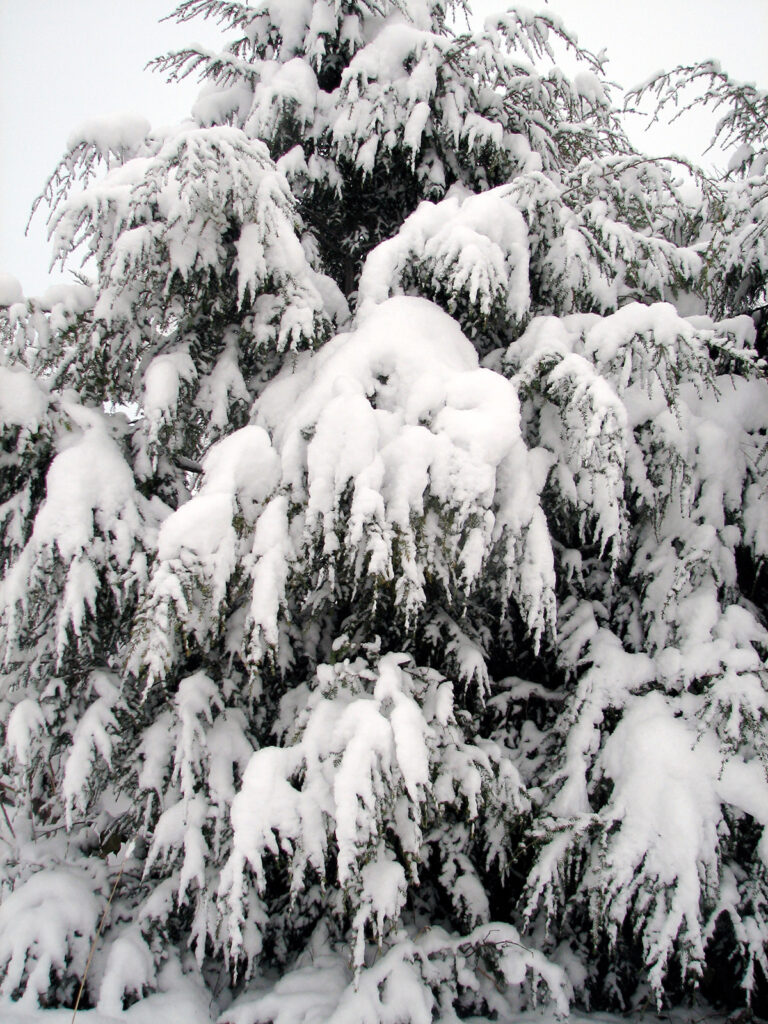
You can see that this can provide very good cover in winter for birds.
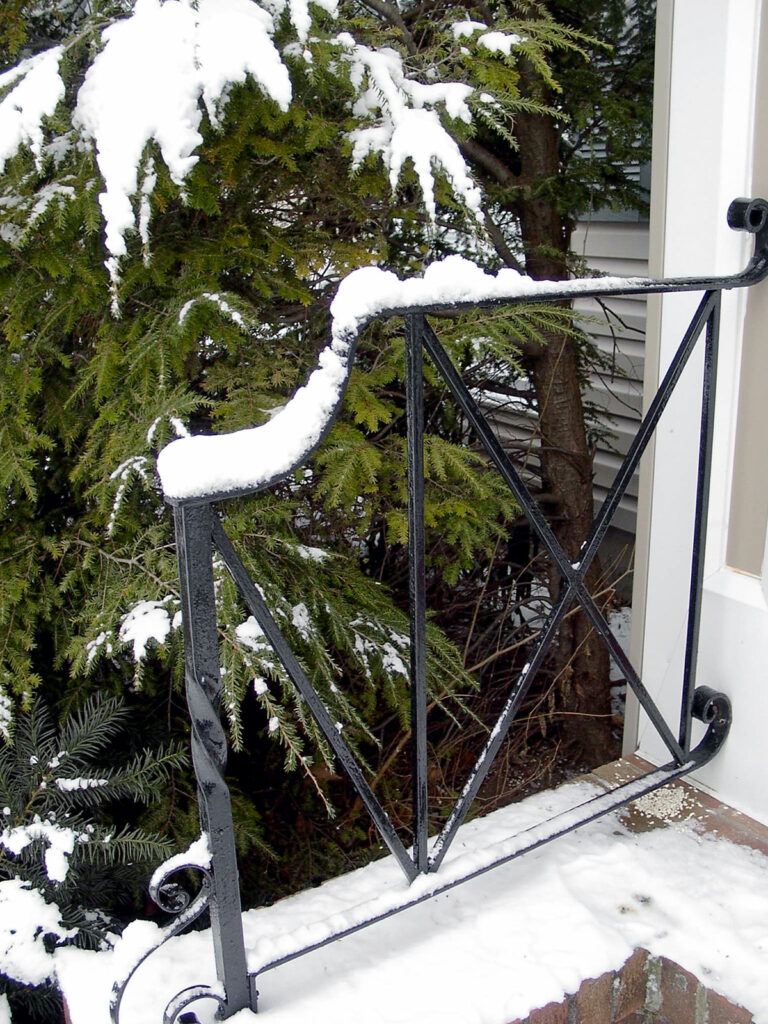
Believe it or not, another hemlock — a tree destined to become 60-80 feet tall and 25-40 feet wide — was planted about three feet from the house at the side of our front door vestibule! And this was done as part of an expensive professionally-designed landscaping project by a high-end local firm when we were young and foolish. I guess they create instant landscaping and assume we’d just replace it with a smaller one in a few years. We, of course, had to cut this down.
This was when I finally realized it’s cheaper to make my own mistakes instead of paying someone else to make them.
Wildlife: Insects
Larval host: Columbia silkmoth
- More information about hemlocks:
- Wildflower Center: Hemlocks
- Outside My Window: The link between hemlocks and birds
- NYS Hemlock Initiative: MyHemlock – A community science project to monitor hemlocks because of the threat of hemlock wooly adelgid. I checked my hemlocks in early March 2022 and was able to report no sign of the adelgid!
